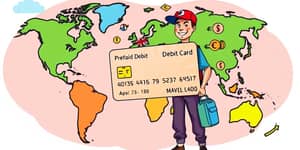
In our fast-paced digital landscape, the allure of instant gratification can be powerful. The gleam of a new gadget or the comfort of updated clothing can stir immediate desire, yet the financial decisions we make today shape our future well-being. As buy-now-pay-later options become ubiquitous at checkout, understanding how to integrate them thoughtfully into your budget is essential.
Approached with care, these plans can offer flexibility and convenience. Misused, they risk creating a web of overlapping obligations that strain both your cash flow and peace of mind.
Buy now, pay later (BNPL) is a popular short-term installment financing product that lets consumers split purchases into equal payments. Typically, you pay about 25% upfront and complete the rest over several weeks, often at zero interest if payments are on time.
Most BNPL plans rely on autopay from a debit card or bank account, streamlining the process at online and in-store checkouts. One of the key attractions is that no hard credit check required opens doors for those with limited credit history.
In recent years, BNPL has grown from a niche payment method into a global phenomenon. Projections estimate global transaction volume will soar to $560.1 billion by 2025, up from $378.3 billion in 2023. This robust growth reflects a compound annual rate of over 13%, driven by consumer demand for flexible options and merchant adoption across industries.
In the United States alone, nearly one in five adults used a BNPL service in 2023. By 2025, approximately 91.5 million Americans are expected to rely on buy-now-pay-later plans, maintaining an average transaction size of $135 and average outstanding balance of $2,085 per user. Millennials and Gen Z lead this trend, making BNPL a defining feature of younger generations’ financial habits.
For many consumers, the top benefits include:
Despite its appeal, buy-now-pay-later carries potential pitfalls. Key concerns to keep in mind are:
Mindful use of buy-now-pay-later hinges on discipline and planning. Follow these practical tips:
As BNPL usage explodes, regulators around the world are examining consumer safeguards. In some regions, new rules may require clearer disclosures of fees, standardized credit reporting, and caps on late charges. Staying informed about evolving legislation can help you anticipate changes and protect your financial health.
On the business side, merchants continue to embrace BNPL to boost conversion rates and cater to younger shoppers. In the B2B arena, new offerings are accelerating growth, with projections anticipating over $37 billion in transactions by 2025. As competition intensifies among providers like Klarna, Afterpay, and Affirm, consumers may see more flexible options and loyalty incentives emerge.
Buy-now-pay-later services can be a powerful tool in managing cash flow when used thoughtfully. By balancing the convenience of deferred payments with clear budgeting, you can capture the benefits of flexible financing without falling into common traps of overspending and surprise fees.
Remember, every purchase is an opportunity to reflect on your values and goals. When you balance immediate desires with future obligations, BNPL becomes not a shortcut to debt but a carefully managed strategy for building financial confidence and stability.
References













